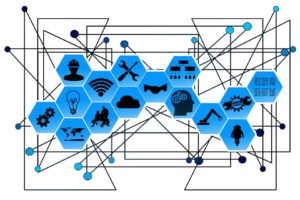 The proliferation of networked devices in the internet of things (IoT) is one of the driving factors behind edge computing. Processing data at the periphery of the network, as close to the originating source as possible, results in major edge computing benefits such as reduction in response time and network bottlenecks. Architecting IoT solutions by bringing the advantages of cloud computing closer to the data source optimizes response times for either good user experiences or to avoid dangerous situations. However, there are many types of edged landscapes depending on the environment and the data being processed.
The proliferation of networked devices in the internet of things (IoT) is one of the driving factors behind edge computing. Processing data at the periphery of the network, as close to the originating source as possible, results in major edge computing benefits such as reduction in response time and network bottlenecks. Architecting IoT solutions by bringing the advantages of cloud computing closer to the data source optimizes response times for either good user experiences or to avoid dangerous situations. However, there are many types of edged landscapes depending on the environment and the data being processed.
A recent article discussing the various types of edge computing models identifies them as: the personal edge, the business edge and the cloudy edge. Each type takes into consideration the systems needed to sense, process and act based on a different set of circumstances for an intended outcome. As the IoT takes hold, the business edge is most often currently being discussed especially in reference to mission critical data. However, more insights will be gained at the personal edge as advances are made in smart home devices and digital health initiatives. For a deeper dive into the various types of edges, read full article here.





 The Internet of Things (IoT) is here to stay. No surprise that our love for connected devices will continue to trend upward to 11.4 billion by 2018 according to Gartner. However, with increased convenience of IoT devices, huge security risks also increase and staying vigilant about security is critical. Security hazards become a big concern as IoT devices often times store sensitive information that can be tempting to hackers. Also, in an effort to go to market fast with new devices, manufacturers may create smart products that are insecure and vulnerable to attacks where weak infrastructures are in place.
The Internet of Things (IoT) is here to stay. No surprise that our love for connected devices will continue to trend upward to 11.4 billion by 2018 according to Gartner. However, with increased convenience of IoT devices, huge security risks also increase and staying vigilant about security is critical. Security hazards become a big concern as IoT devices often times store sensitive information that can be tempting to hackers. Also, in an effort to go to market fast with new devices, manufacturers may create smart products that are insecure and vulnerable to attacks where weak infrastructures are in place.